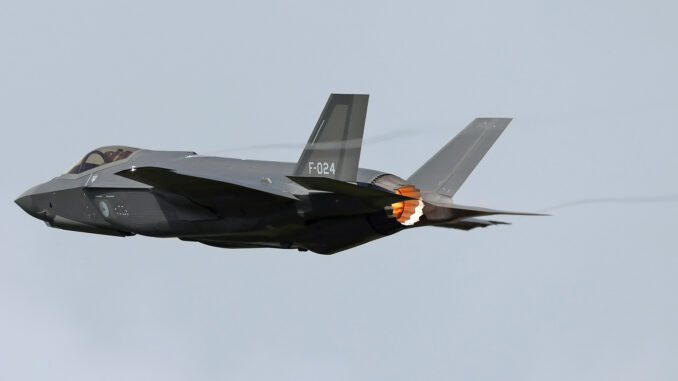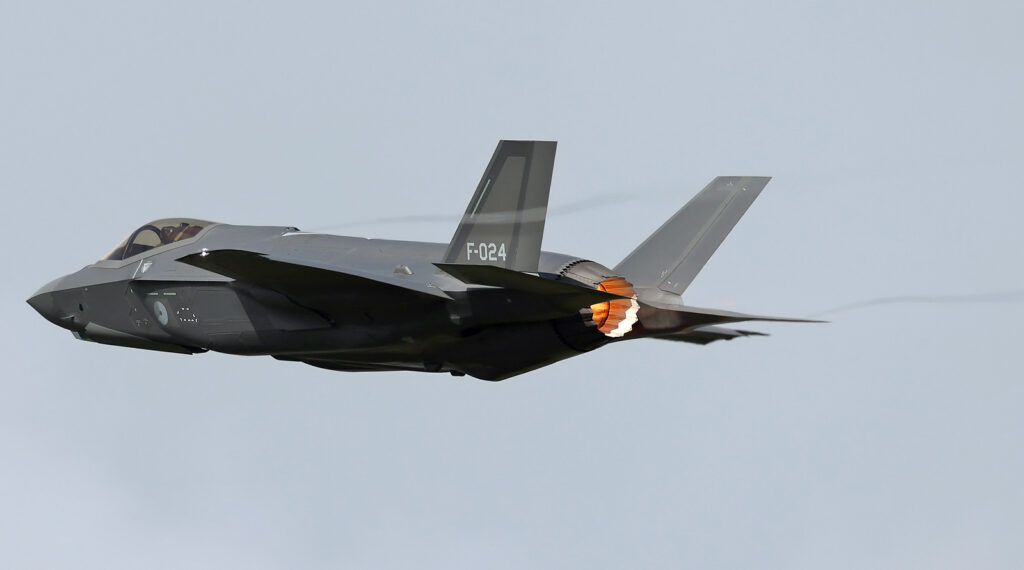
RUAG Switzerland has received approval to produce four F-35A fighters locally, promoting technology transfer with Lockheed Martin.
Switzerland has authorised RUAG to produce four of its 36 F-35A fighters locally. This project, supported by Lockheed Martin, will enable RUAG to acquire essential technological skills, consolidating its role as a regional support provider in Europe for the F-35. Production will start in Switzerland with final acceptance in Italy, bringing economic benefits and high-tech jobs.
Development and impact of local F-35A production in Switzerland
The RIGI project: a strategic opportunity for RUAG
The RIGI project, approved by armasuisse, allows the Swiss company RUAG to assemble and test four of the 36 F-35A fighters purchased by Switzerland. This project is crucial for RUAG, as it is primarily a transfer of technology and knowledge rather than a simple production project. This initiative will provide RUAG with an in-depth understanding of the F-35A, facilitating the development of valuable maintenance and technical skills.
RUAG’s participation in this project is part of a wider strategy to integrate the company into the European support solution for the F-35. This inclusion could transform RUAG into a key regional supplier for F-35 support and maintenance in Europe, bringing long-term economic and strategic benefits.
Economic implications and job creation
The RIGI project is valued at nearly 500 million Swiss francs (approximately 456 million euros). This amount represents a substantial part of the overall F-35A acquisition agreement, which includes significant commitments from Lockheed Martin for industrial offsets.
Lockheed Martin’s commitment to offset 60% of the contract value through transactions with Swiss companies (approximately €2.8 billion) will stimulate the local economy. RUAG, as lead partner, plans to recruit 40% of the required personnel in the Romandie region, generating significant investment and employment opportunities in the area.

F/A-18 Hornet and F-5 Tiger replacement: modernising the air fleet
The 36 F-35As will replace the old F/A-18 Hornets and F-5 Tigers, modernising the Swiss air fleet. The F-35As are equipped with cutting-edge technologies such as TR-3 hardware and Block 4 software, giving Switzerland advanced capabilities in electronic warfare, intelligence, surveillance, reconnaissance and networked operations.
The new aircraft will be based at Payerne, Emmen and Meiringen air bases, ensuring complete coverage of Swiss airspace. This modernisation is essential if we are to maintain an effective air defence system capable of responding to today’s threats.
Technological advantages of the F-35A
The F-35A Lightning II, designed by Lockheed Martin, is a fifth-generation fighter aircraft featuring advanced stealth technology. This technology reduces the aircraft’s radar signature, enhancing its air-to-air and air-to-ground capabilities. The aircraft is equipped with the Electro-Optical Distributed Aperture System (DAS) and the Electro-Optical Targeting System (EOTS), providing full situational awareness and precise targeting.
The F-35A can carry a variety of weapons, including air-to-air missiles, air-to-surface bombs and specialised munitions such as the Joint Air-to-Surface Standoff Missile (JASSM) and the Long-Range Anti-Ship Missile (LRASM). These capabilities make the F-35A a versatile asset for both defence and attack missions.
Strategic consequences for Swiss defence
The introduction of the F-35A will considerably improve Switzerland’s air defence capabilities. With performances such as supersonic speed, a range of up to 2,800 km and a service ceiling of 15,240 metres, these aircraft will enable Switzerland to strengthen its surveillance and protection of the national airspace.
Collaborations with Lockheed Martin and other international partners will also facilitate Switzerland’s integration into wider air defence networks, offering greater interoperability with allied forces. This strategic integration is crucial for national defence and for strengthening international alliances.
Future prospects and challenges
While the local production of four F-35As represents a significant step forward, long-term success will depend on RUAG’s ability to absorb and effectively apply the new technologies and skills it acquires. Continued investment in training, infrastructure and research and development will be essential to maintain RUAG’s competitiveness and relevance in the defence aerospace sector.
The RIGI project and the local production of the F-35A in Switzerland are major steps to strengthen the country’s defence capabilities, stimulate the local economy and position RUAG as a key player in the support and maintenance of the F-35 in Europe. These developments will have a lasting impact on national security and the Swiss defence industry.
War Wings Daily is an independant magazine.